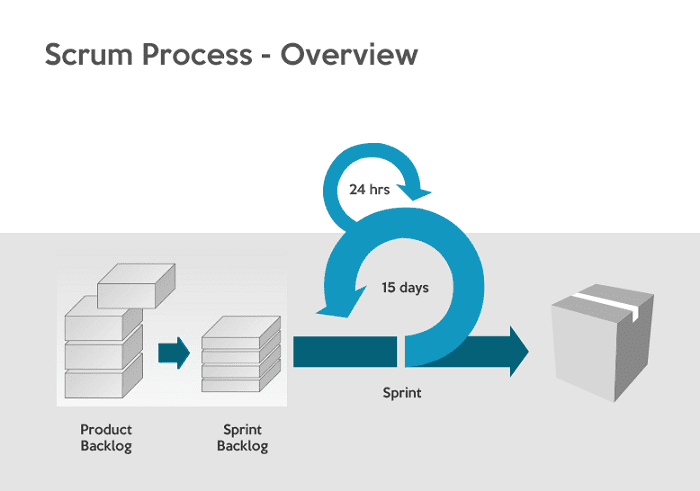Last updated on March 10th, 2021 at 07:58 am
Everybody is talking about Scrum-Agile principles, its framework, and success. Well, Scrum is not a technology suite. Rather it is an implementation toolset to revamp the way organizations function and think. And this framework when looked at from its core aims and values needs to be adopted across the organization and affects every employee. Scrum has the answer to implementing productive AI, ML, VR or AR technologies and changing the very way we think across industrial infrastructures, technologies applied and size of organizations. Everyone is set to benefit and think in Scrum.
The implementation benefits:
Scrum efficiency brings great results to teams who use Agility related principles on the Scrum framework because in this philosophy it is all about being effective and robust as a team and managing projects under a talented SM to infuse the mindset, values, and practices into the equal-members Scrum team. They flourish on getting self-organized, communicating effectively and contribute through being constantly contributive in all transactions private and team-wise. Thus the talent pool allows efficient scaling and functional management.
Drawbacks:
The framework is a recent addition and is yet evolving to deal with rapid technological changes, increase in data capabilities and scaling issues. Though compatible with many evolving technologies the basic Agile premise of the main project being sub-divided into achievable product backlogs dealt with in short sprints with Scrum values implies that a uniform Scrum mindset is being applied across all processes of the organization. This is hard to achieve and can negatively impact performance, productivity, and efficiency when not adhered to. And this is true also because of the vast variety of verticals, processes, and ownership to which it is being applied.
Key Scrum functions:
Since nearly all industries wish to implement the Scrum benefits, we need to look at the core functions listed below.
- Revamping team structures: The movement to cross-functional teams and hiring an effective CSM is at the core of up-scaling.
- Scaling design: This cannot be isolated and needs to factor in the various strategies, compliance, and inter-departmental integration to induce Scrum oneness across the framework.
- Monitoring the product backlog and release management: This factor is crucial in large projects and best achieved with an efficient CSM, the Scrum team and product owner working together effectively.
- A productive backlog: This crucial element needs team consensus, constant CSM monitoring, and a knowledgeable CSPO.
- Mentoring Support: The CSM is the unofficial manager of the team leading through effective Scrum value implementation and lies at the very heart of success as a team.
Why Scrum is popular:
Here is how Scrum is instrumental in such success.
- The Scrum growth has been exponential in terms of its adoption by nearly 65 percent in the IT sector.
- Scrum is effective in handling timely schedules, and preventing project costs overrun which is an important factor according to the McKinsey report for project failures.
- The framework is simple and compatible with all verticals and sectors as long as you have an efficient SM.
- The Scrum-Agile framework has been tried and tested across large, medium, small and startup environments successfully.
- The SM is essentially the Scrum values leader and unofficial team manager to induce the Scrum state in all processes and persons associated.
- Scrum requires smaller teams and results in higher efficiency and productivity across departments.
- Scrum basic assumptions are collaborative teamwork in the framework where all are equal, self-organizing and responsible for team performance.
Conclusion:
The software when working for Agility in Scrum incorporates items like product backlog and sprint planning features important to developing the framework for Scrum operations. But Scrum goes beyond the IT industry and can be used as an effective management practice in all sorts of situations and even in personal life. Scrum is a philosophy and is definitely set to impact all who learn it across all levels of the organization.
In parting, to imbibe Scrum effectively one will need formal training. It should involve hands-on practice on industry-relevant situations and is a process that benefits from the mentorship of a certified SM. It is also important to get your training at a reputed organization like Imarticus Learning where the Scrum Alliance issues your certification. You also earn a 2-year alliance membership for free which provides you with efficient peer-support when you implement Scrum values and transition teams to an Agile state. Why wait? Grab this opportunity today.

